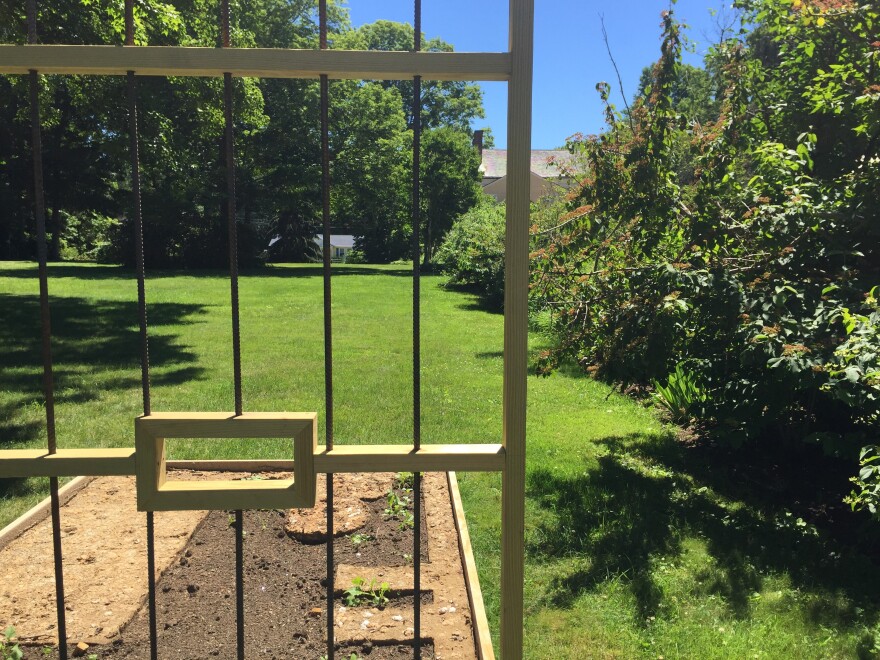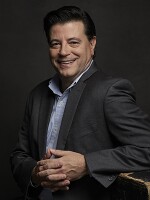COVID-19 has affected all of us. In one way or another we’ve all had to deal with isolation, loss and change. And by we, of course, I mean practically the entire planet. It’s almost unheard of that most of the world’s population has a collective experience, but the pandemic provided just that.
Social and Solitary: Reflections on Art, Isolation and Renewal holds a mirror up to those shared experiences. Amy Kurtz Lansing, curator at the Florence Griswold Museum, teamed up with associate curator Jenny Parsons to choose works from the permanent collection that touch on broad pandemic themes.
“So, we thought about gathering places, we thought about how nature has played a more intense role, the way that we ended up experiencing nature more intensely, because we couldn’t go indoors anywhere together, we looked at the isolation at home that many of us were experiencing, and the theme of struggle and renewal itself,” said Lansing.
Lansing said the exhibit was a perfect fit for the Florence Griswold Museum, given its focus on impressionist art.
“Just the way that we were turned in ourselves, turned in to our own homes, opening those homes up to people via Zoom meetings, it struck me that the impressionist works in our collection really speak to that because these are artists doing the same thing. They are taking what’s around them and making that their subject matter -- their homes, their families. And so that was an unexpected recognition to come out of this work.”
One of the impressionist paintings chosen for the exhibit was Morning at Boxwood, a 1910 painting by American impressionist Mary Bradish Titcomb. In the painting, five women sit in rockers on a shaded veranda -- together, but intensely focused on their own activities.
“She’s celebrating on the porch where these other women that she interacted with are all there together, but they are quiet, they are doing their own thing. Someone’s reading the paper, others are knitting or sewing,” explains Lansing. “Our experience during this pandemic has reminded us how inextricable the social and the solitary are, that we need both of those things. Those are both parts of human nature that need to be honored.”
A newer work in the exhibit is a 2016 photograph by Sophie T. Lvoff, titled Wildroot, Look Better, Feel Better (Walker Evans’s Possible Barber Shop), taken in Old Lyme at a local barbershop that’s adorned with flags and other patriotic decorations for Memorial Day.
“We included it in this show because it’s showing a barbershop, which of course barbershops were closed, everybody was worried about their appearance, and this whole idea of looking better and feeling better is something that people really struggled with during the pandemic,” said Lansing. “And the patriotic tone of it. Being patriotic last year might not have meant going to a Memorial Day parade, but it might have meant wearing your mask to protect your health and others. It was a great exercise to look at this photograph through the lens of the pandemic experience and finding things in it.”

People who come to the exhibit also have a chance to be part of it. They’re encouraged to write down their own pandemic experiences on a sticky note and tack it on a giant wall in the exhibit hall for everyone to read.
“Well, I think it’s an exhibition where we wanted to create a space for people to process what has been happening to them. We see this show, this institution as interacting with our audience empathetically. So, we realize that we’ve all been through a lot, and as much as people want to put that behind them, we all need space and time to process those things.”
Social and Solitary also features a new outdoor installation by New Orleans-based artist Jackie Sumell. Solitary Garden is a project that involves a volunteer corresponding with an incarcerated person to build and grow a garden. Lansing explained that the garden bed is roughly the same size as a solitary confinement prison cell.
“There are areas where you can grow things, things that the incarcerated person selects, but then the other areas are blocked out to remind us how little space there is in solitary confinement,” says Lansing. “Jackie Sumell really sees incarceration as something that makes individuals invisible, and so these garden beds answer that by making them visible.”

Social and Solitary: Reflections on Art, Isolation and Renewal runs through Sept. 19. Solitary Garden will be on view through 2023.





